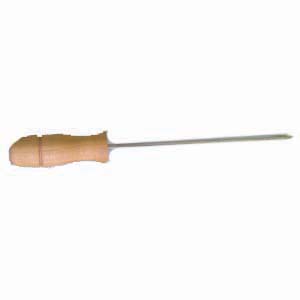What Theresa Hak
Kyung Cha Left Behind: Cha’s Life and Work (1951-1982)
The artist
Theresa Hak Kyung Cha survived through the physical division of Korea, was a
daughter to war refugees, migrated to the United States during the post-war
protest era, and was able to study and make art in compelling ways that reached
across several mediums and genres. Cha’s life ended at the hands of a brutal
serial murderer in Soho, New York City. Theresa Hak Kyung Cha died at the age
of 31 but left behind a body of work that still fascinates scholars. For example,
her first published book, Dictée is studied by
artists, students pursuing degrees, and taught by teachers in Universities
across the world. Despite Cha being murdered early in her career and life she
left behind work as a writer, visual artist, performer, critic, and as a photographer.
Cha’s art investigated language’s intrinsic connection with humanity and continues
to bridge the gap between “the foreign” and “the familiar.”
Cha
was an artist who used her experience as a woman in migration and her own
displacement to depolarize differences. Cha’s work brought linkage between the
challenge of assimilation and the comfort of familiarity. Cha was born in Pusan,
Korea in 1951 during the Korean War. Her parents fled to Manchuria later
returned to Korea and then moved to the Hawaiian Islands. Cha and her parents
moved to San Francisco, California in 1964 (Lin, 1). Cha’s experience becoming
westernized is a theme that reveals itself through Cha’s work and she used
language and linguistics in almost all of her visual art, performances, and
artist’s books.
When
Cha studied at University of California at Berkeley, she chose Comparative
Literature for her undergraduate degree and Cha learned how to speak French as
well as Korean and English (Lin, 1). Cha’s own journey through diaspora seemed
to always be present in her work. Cha’s theme of displacement gave viewers a
bridge to gap the distance between their own point of view and being “otherly”
and her personal narrative. For instance, Cha used performance to practice how
her audience participated in her work. In Aveugle
Voix, Cha used black-stenciled text to create banners with single words
“Voix” covering her eyes and ears and held “Aveugle” over her lips. The
translation of aveugle is “without eyes” and voix means voice; Cha is using
linguistics and language to communicate to the viewer that individuals
communicate with much more than words, our speaking voice, and non-verbal cues.
Cha’s sparseness and concision with this piece, and her work overall, became a
trend throughout her career and spoke to viewers who were left to piece
together meaning. As Celeste Connor reviewed Cha’s retrospective, The Dream of the Audience: Theresa Hak Kyung
Cha (1951-1982), Connor wrote, “She is one of the “Others” whom she
identified with in her favorite texts and, later, in her own.”
Identity,
displacement, and translation were thematic foundations for Cha’s work. Connor
calls Cha a “prime example of Minimalist deconstructive academic art of the
1970s” (13). People can easily relate to Cha’s work because the experience of
being a foreigner or not belonging to one’s own space and time is a commonality
between every culture. Cha preceded the academic subject of hybridity. Of
course, her work must have influenced scholars such as Edward Said who explored
heterogeneous identities. Many of her pieces such as Aveugle Voix (1975) and Permutations
(1976) present the audience with images of intersections. In Aveugle Voix, Cha is seated at a street
corner, a literal intersection and in Permutations;
her body is photographed and layered with different images creating
intersections on her subject’s body.
Besides
Cha’s performances that relied on switching the roles of the viewer and the
performer she produced an artist’s book titled Dictée. Dictée was published in 1982 months before
Cha’s unprecedented death (Solomon, 144). It is very hard to put the work into
a genre because Dictée is another hybrid creation from
Cha’s. While looking at the text within the book, the viewer will see some
words running vertically, some horizontal, some in English, some in French, and
even language in Cha’s mother tongue, Korean (Solomon, 144). The perplexity
that Dictée offers is an implication of
the feelings that Cha had while traveling to new worlds, trying to blend in with
new cultures, and hints that she felt a piece of each culture made her who she
was. Cha was a woman who was multi-faceted and Dictée shows that side of her individuality. Some readers have expressed
confusion while interpreting the text, but I think Cha wanted to work within
blurred lines of expectations. She seemed to want to push boundaries and
reinvent language, diction, prose, and grammar.
Cha
was an avid reader and often used some of her favorite texts as influences in
her own work (Lin, 2). For instance, she used the lyrics to a Beatles song to
inspire a small sculpture which contained printed language on narrow pieces of
paper strung together (Garcia, 13). I interpret her piece titled, Surplus Novel, as an expression of
sentiment. She really loved language. She enjoyed looking at how language works
together. The string holding the pieces together could be a symbol for syntax
and the typewritten font could be a choice Cha used to indicate that language
and expression is universal. Using black and white especially black fonts on
white backgrounds is a common theme among Cha’s work. I believe it was a choice
that she made to appeal to the audience. It appears professional but is intimate.
Having the paper curling up around each other implies the relationship of words
to each other. Cha gifted the piece to her brother (Soe, 17). Cha interacted
with a pedestrian within her piece. The stranger asked her if she was Yoko Ono
on the street in New York; Surplus Novel
seems to be a reaction to race and identity because she may have felt like the
person just assumed she was Ono because she was Asian (Garcia, 13).
Being
Asian-American influenced Cha a lot and her work was about being part of
several different cultures. Cha being female also impacted her work and its
reception. For example, her video Paysage,
Paysage, was described as powerful and autobiographical, a video depicting
sexuality and her own story (Smith, 192). She dissected text and inserted
breaks that were non traditional. The flow of the video was a bit jarring and I
think Cha used intermissions to give the audience room to evaluate but also to
create a resonance that provided commentary on the power of language and
interpretation. Cha used the body to invoke sensuality and often used images of
mouths, faces, and chests. When she mumbled words and images I think she was
giving the reader the idea that we, as humans, communicate with much more than
words and linguistics. She seemed to nod to body language without explicitly
addressing bodily gestures.
With
her work in video that expanded roles of gender, sexuality, race, and examined
what culture is and means Cha left behind a vast body of work. Even with Cha’s
life ending short and abruptly, Cha’s masterpiece Dictée was left behind to give wonder to readers and scholars. Her work
was an intersection itself. Between cultures, between languages and settings,
Cha found a niche to produce work that reinvented the connection between audio,
visual, and interpretation. She seemed to really look at comfortable settings
versus being the outsider in fresh ways. I think she was very intellectually
vigorous and her traveling gave her a worldview that was especially unique. Cha
seemed to want her audience to look at what was the same, what contrasted, and
what lied in between. I think if she was alive today, her work may have delved
into what is now considered androgynous. Looking at Permutations, Cha’s image blending of bodies and positions imply a
juxtaposition of sexuality but she switches the bodies in each section with
different genders, garments, and postures. Cha used her sister’s face that
looks almost identical to hers in the photos and mix-matched the torsos and
intimate areas examining duality. The center body has a penis but others
surrounding appear female. No gender, no “label”, no identification. That is
what Cha seemed to want to leave with her audience.

Cha
was a front runner in her work. She really was before her time. Cha was
apparently comfortable taking on issues in the late 1970’s and early 1980’s
that are still evolving today and are completely controversial; however, Cha
never seemed to address her topics in her work to stir controversy. She seemed
to be comfortable with intimacy. Cha seemed to live privately and be an introverted
artist during her life. She left so much room for interpretation that she seemed
to be in a relationship with white space and caesura. I think Cha wanted to
express how complex language was but also how limited language is. She must have
had that moment when she was grasping for a word but there was no word to use
for what she wanted to express. I assume that is why she was interested in the
gap between when an idea is formed and before it is on the tip of the tongue
(Solomon, 144). Cha’s work will leave a legacy for future generations to look
into, give meaning to, and examine and I think that is the role of an artist.






